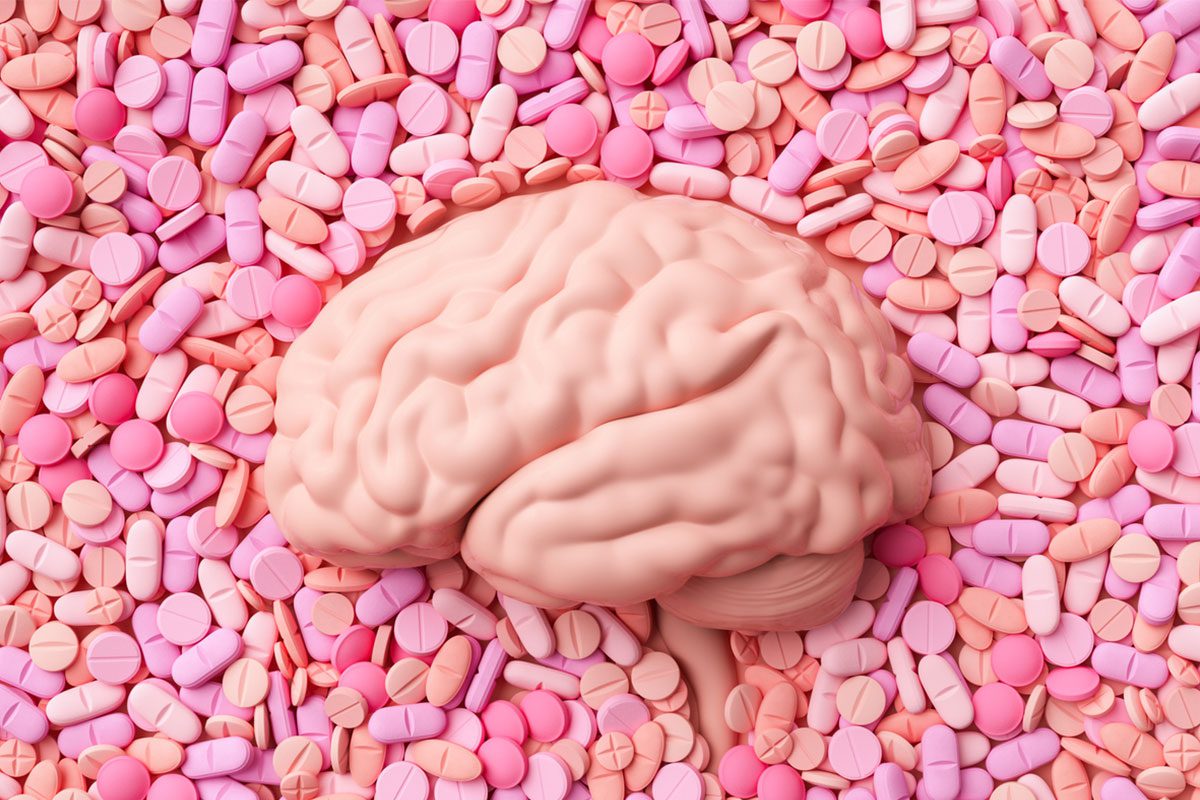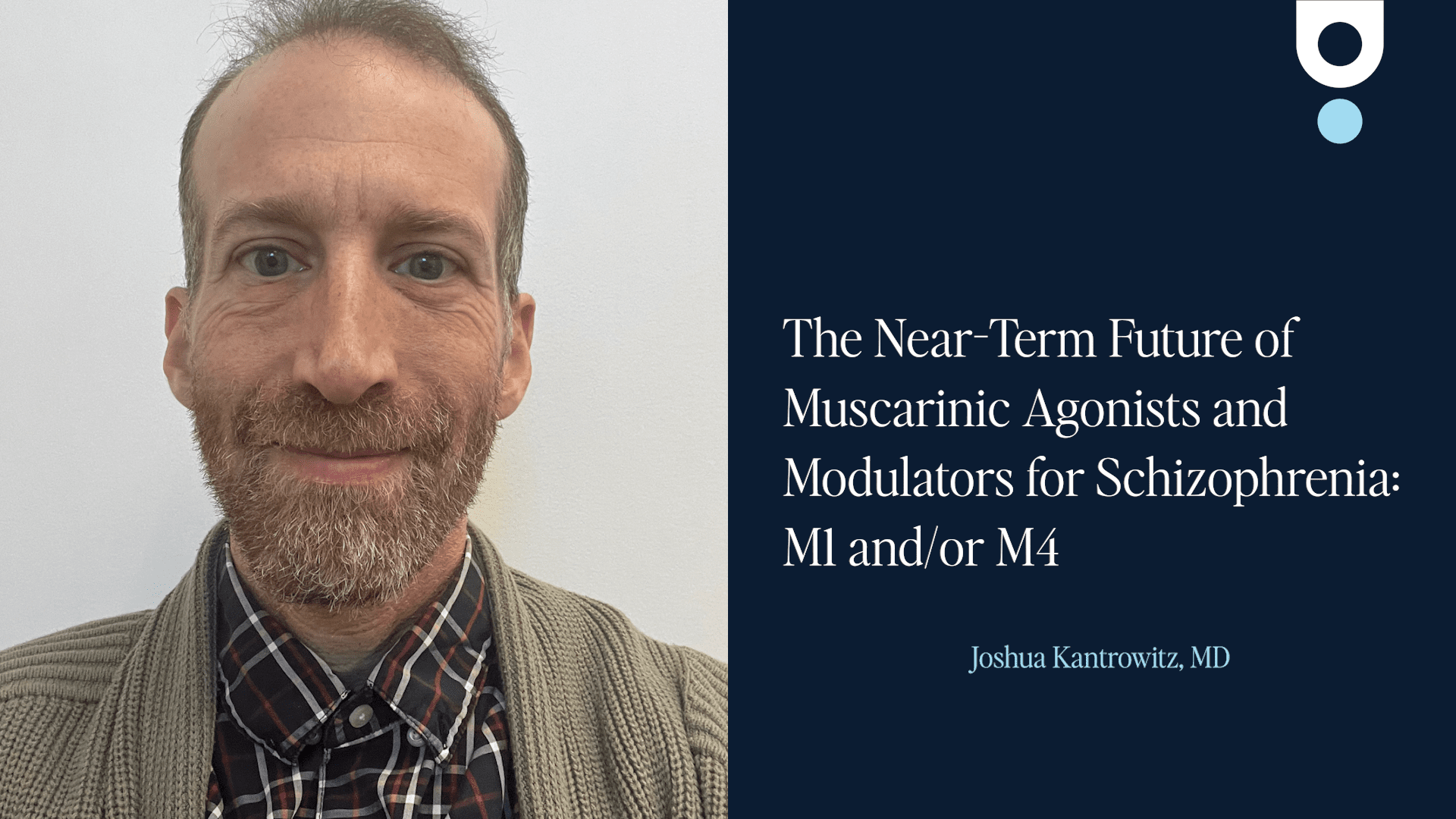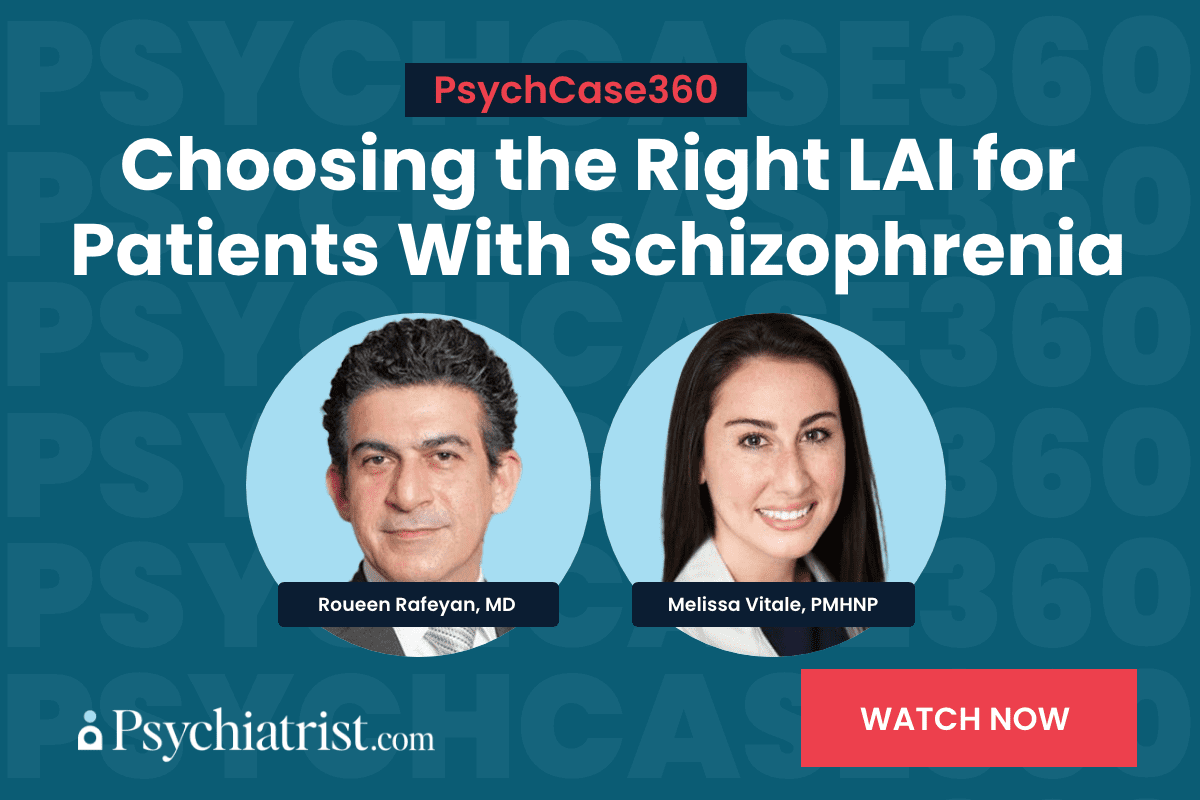Joshua Kantrowitz, MD
Associate Professor Clinical Psychiatry
Columbia University Irving Medical Center
New York, NY
Joshua Kantrowitz, MD, is an Associate Professor of Clinical Psychiatry at Columbia University where he serves as the Director of the Columbia Schizophrenia Research Center and a researcher at the New York State Psychiatric Institute/Nathan Kline Institute for Psychiatric Research. A leading expert in schizophrenia and related disorders, Dr. Kantrowitz focuses on the causes, prevention, and treatment of psychotic disorders, particularly schizophrenia. His work emphasizes NMDA receptor dysfunction, early-stage therapeutics, and auditory cognition, exploring neuroplasticity deficits and biomarker-driven treatments using neurophysiological and neuroimaging techniques.
In this video, Dr. Kantrowitz provides an in-depth update on current and emerging treatments for the negative symptoms of schizophrenia. He discusses symptom classifications, key clinical trials, and potential therapeutic options, including antipsychotics, NMDA receptor modulators, and 5-HT2A receptor antagonists, and muscarinic acetylcholine receptor modulators. This presentation explores promising findings while emphasizing the need for further research to refine treatment strategies.
This presentation is part of the Emerging Approaches in Schizophrenia Editorial Focus collection from Psychiatrist.com News. The collection focuses on the latest advances in schizophrenia treatment, with an emphasis on emerging therapies that go beyond traditional dopaminergic approaches.
Transcript
0:02 – 1:42) Introduction & Overview of Negative Symptoms
Hi, my name is Joshua Kantrowicz. I’m an Associate Professor of Clinical Psychiatry at Columbia University and the Director of the Columbia Schizophrenia Research Center at the New York State Psychiatric Institute. I’m here to talk about an update on the current and upcoming treatment landscape for the treatment of negative symptoms of schizophrenia.
Before we get into the treatments, let’s do a brief overview of the types of negative symptoms in schizophrenia. According to the DSM-5, schizophrenia negative symptoms are broken up into five separate symptoms. There’s diminished emotional expression, which is generally known as a flat affect and poor eye contact.
There’s avolition, decreased motivation to do things, decreased motivation to get out of the house and get up and work, volunteer, or do things. Alogia is decreased speech, poverty of speech as it’s sometimes known. There’s also anhedonia, which is decreased ability to experience pleasure.
Not necessarily reduced doing things that are pleasurable, people just don’t enjoy it that much. And there’s also asocialality, which is decreased interest in opportunity in social interactions. Someone who isolates doesn’t have a lot of friends.
These are often thought of as by people that don’t know the symptoms of schizophrenia as someone being lazy or uninterested in people. But just like we wouldn’t blame someone with diabetes or inability to eat sugar, we shouldn’t blame our patients with schizophrenia for having negative symptoms. It’s part of the illness.
(1:43 – 3:04) Subgroups of Negative Symptoms & Clinical Relevance
In addition to these subtypes of negative symptoms, there’s also different subgroups that we group people in as their level of negative symptoms. These are relevant clinically, but even more so, they’re relevant for clinical trials. The first one is prominent negative symptoms, and this requires stable negative symptoms sometimes for several months combined with lower levels of positive, depressive, and extrapyramidal symptoms.
This used to be called deficit syndrome, and this is often a group that we’ll look at in clinical trials because it avoids the potential confound of secondary negative symptoms, which sometimes could be negative-like symptoms that come from depression, or a flat affect from extrapyramidal symptoms, or social isolation because someone’s paranoid. There’s also a predominant negative symptom, which is pretty similar, requires a minimum level of negative symptoms, but it doesn’t have these other restrictions. And some studies look at all comers with schizophrenia, and then they measure negative symptoms.
This is actually the majority of studies. I’ve termed it broadly defined. These just take all comers with negative symptoms, and we measure how they improve, whether or not they’re secondary, primary, or prominent, or predominant negative symptoms.
(3:05 – 4:39) Current Treatment Landscape: D2 Antipsychotics
On the next couple of slides, we’re going to discuss some specific treatments that have been tested for negative symptoms. On this slide, we have a selection of D2 antipsychotic studies in predominant negative symptoms. I have some results from a meta-analysis with amisulpride, which is an antipsychotic that is only available in Europe at this time.
There’s been four studies in predominant negative symptoms across almost 600 subjects with a moderate sex-size improvement versus placebo. As I said, it’s only available in Europe at this time, but there is an amisulpride derivative that is being tested for potential use in the US, should the studies be successful. Those studies are ongoing.
On this middle row, I have olanzapine. Olanzapine is one of the more effective antipsychotics, despite a prominent connection to weight gain. The evidence for specific efficacy in negative symptoms is less than stellar, but because of its overall effectiveness, it’s often something that is used in people with high levels of negative symptoms.
On this last row, I want to discuss a little bit about one of the relatively newer antipsychotics, cariprazine. It was tested in a rather large study sponsored by the maker of cariprazine versus risperidone. In this study of predominant negative symptoms, cariprazine showed a small effect size, but significant improvement in negative symptoms versus risperidone.
(4:39 – 6:43) Investigating NMDA Receptor Agonists
This potentially promising study was not followed up by the company, so it does not have specific FDA approval for negative symptoms. However, it is a potential option to be used based on the results of this study. On this slide, we have a selection of NMDAR agonist studies for negative symptoms.
This is based on the NMDA hypothesis of schizophrenia, and it’s probably one of the most well-tested adjunctive agents for negative symptoms in schizophrenia. On this first row, we have a selection of direct agonists. These are compounds like D-serine or glycine that directly activate the NMDA receptor.
There’s been 32 studies in over 1,000 subjects and a nearly large effect size improvement in negative symptoms. By contrast, indirect agonists, which act more like an SSRI for the NMDA receptor and increase the levels of either D-serine or glycine indirectly, have not shown overall efficacy in negative symptoms. Many of these studies were done by industry, and they were large phase 3 studies and may have been impacted by the large placebo effect we often see in those studies.
I’m not suggesting that we should go out and use these indirect agonists for negative symptoms, just bringing this up as a potential caveat for interpretation of these results and future research. On the last row, we have a series of studies done with memantine, which is an FDA-approved agent for Alzheimer’s disease and other dementias. There’s been nine studies across about 500 subjects and a moderate effect size improvement for negative symptoms.
The caveat to this is these studies were done in broadly defined schizophrenia, not predominant negative symptoms. However, as an FDA-approved agent, it’s a potential option to be used in our patients. This is not necessarily advocating for its use, but given that it’s a widely tolerable FDA-approved agent, it might be worth a chance for patients that have not had improvements on other agents.
(6:44 – 8:32) Serotonin 2A Antagonists & Clinical Trial Challenges
Moving on, on this slide, we have two serotonin type 2a antagonists that have been studied for injunctive use in predominant negative symptoms of schizophrenia. Two agents have been tested most recently, both industry-sponsored and relatively large phase 2 and phase 3 programs. The two agents were roluperidone on the top row, which is also known as MIN-101, and on the bottom row, pimavancerin, which is an FDA-approved agent for Parkinson’s disease psychosis.
Both have predominant serotonin type 2a direct or functional antagonism, along with other receptor affinities that may play a hypothesized role in their treatment. On the slide, I have listed within-group improvement for both programs for the active and placebo groups for the phase 2 and phase 3 programs for both compounds. Please note that the two programs used different scales, so we can’t directly compare within-group improvement within a column.
The PANS negative factor and the NSA have a different number of items and scoring ranges, and thus, 3.5 is not directly comparable to 11.8 within a column. On the left half of the slide, for both programs, the phase 2 studies showed a significant between-group improvement, favoring the active comparator, supporting a move into phase 3. Moving to the right half of the slide, we note that the phase 3 programs showed an active group improvement that was highly similar, if not slightly better, compared to the phase 2. In the last column, however, we show that the phase 3 placebo improvement showed a large increase compared to phase 2, especially for roluperidone, in which the negative symptoms improvement doubled, more than doubled, actually. For both roluperidone and pimavancerin, the phase 3 programs did not show statistical between-group differences.
(8:32 – 10:41) Future Research & Practical Considerations
As I have stated earlier, I’m not advocating for use of either compound as a definitive treatment for the predominant negative symptoms of schizophrenia at this time. However, it is difficult to beat a placebo effect that doubles between phase 2 and phase 3, and it is not clear to me that the field should abandon further study of either compound or the concept of 5-HT2A antagonists for the treatment of predominant negative symptoms. On this slide, we’re looking at XT.
In this slide, we’re going to focus more on the negative symptoms. Overall, there was improvement in negative symptoms across the full sample. When they looked at the subsample of patients who qualify as prominent negative symptoms, as defined earlier in this talk, there was even bigger separation, suggesting that XT may have specific efficacy in prominent negative symptoms and negative symptoms in general.
The caveat to these studies is that it was done in a acutely exacerbated population, and it’s difficult to distinguish between improvement in secondary negative symptoms or extrapyramidal side effects versus pure negative symptoms. A future study will have to be done in a group of people with stable prominent negative symptoms at baseline to see if it has specific efficacy in a stable population. In this presentation, we’ve discussed some potential investigational and available agents for negative symptoms.
In conclusion, cariprazine is a potential option, as is memantine. I would advocate for, if one was going to try these agents, using them in a time-limited way, giving it four to six weeks, eight weeks, with a set endpoint in which you decide whether or not it’s working or not to avoid keeping people on medications that are not working. If they are working, great, you found a good treatment for the patient.
If not, you can move on to the next option.
Save
Cite



